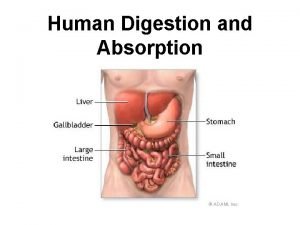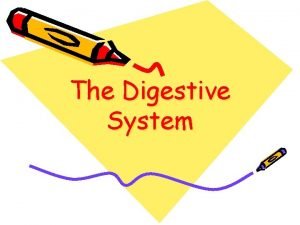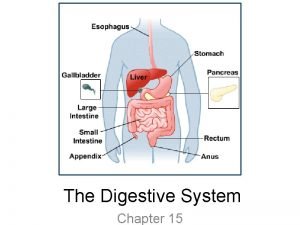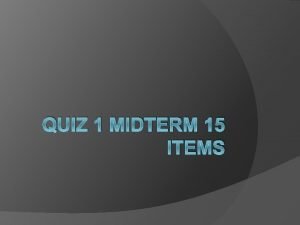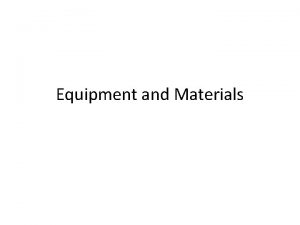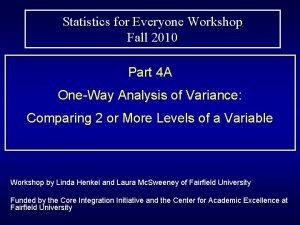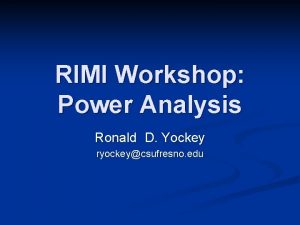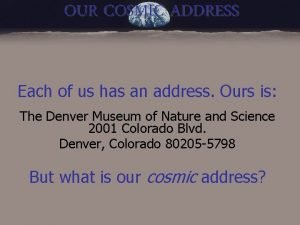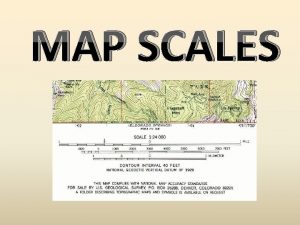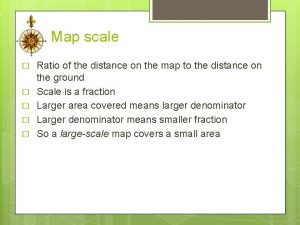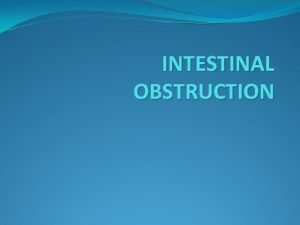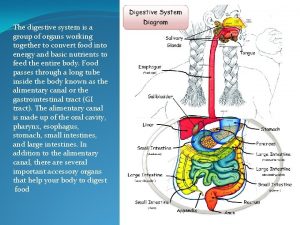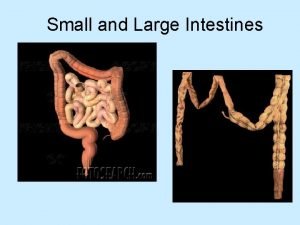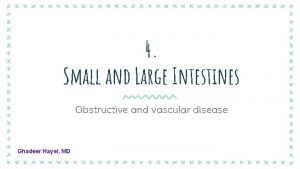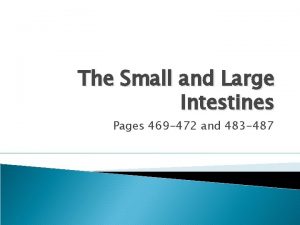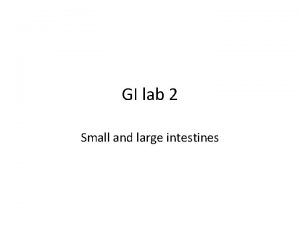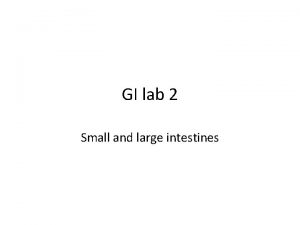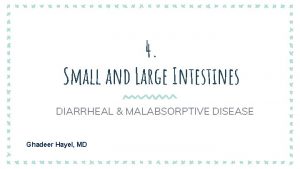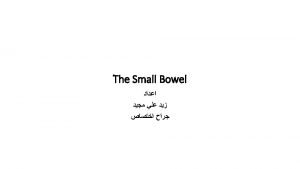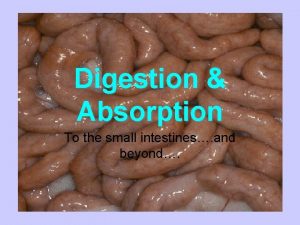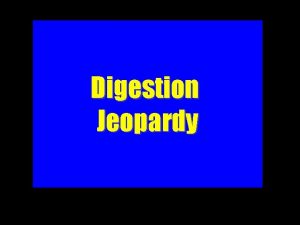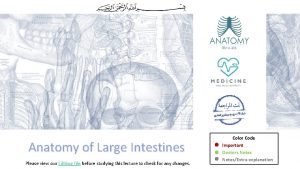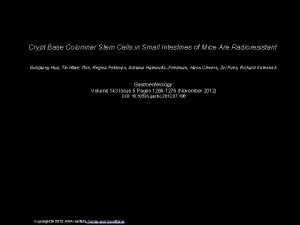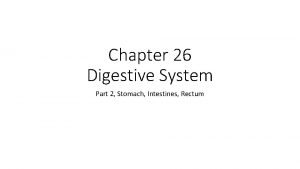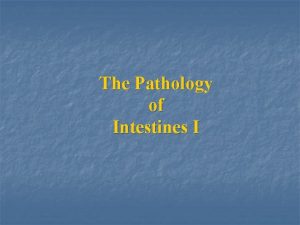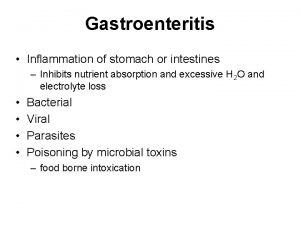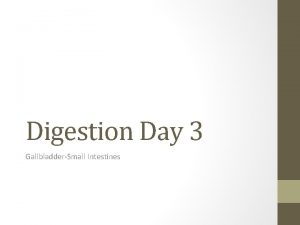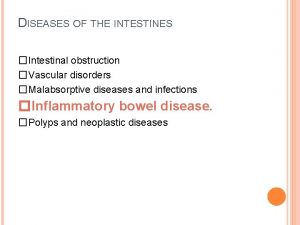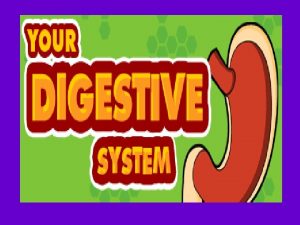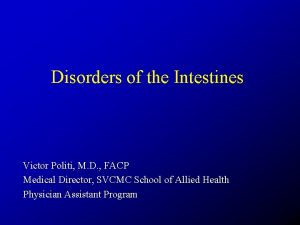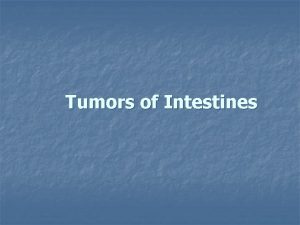Intestines Small and Large Do Now On the
























- Slides: 24

Intestines Small and Large

Do Now • On the same side as last week, in whichever box you left blank (probably Monday): • List the 4 sphincters of the digestive system in order from first to last.

Most Digestion Occurs in the Small Intestine • The small intestine consists of three segments: • Duodenum: 10 in long • Jejunum: 8 ft long • Ileum: 12 ft long • Mechanical and chemical digestion take place in the small intestine. • The surface of the small intestine is lined with villi, which help maximize absorption. • Microvilli: villi on the villi • The contact time in the small intestine is 3– 10 hours, depending on the food eaten. © 2014 Pearson Education, Inc.

Small intestines © 2012 John Wiley & Sons, Inc. All rights reserved.

Small intestine secretions • Pancreas secretes pancreatic juice containing: • • Bicarbonate neutralizes stomach acid Pancreatic amylase: carbohydrates into sugars Pancreatic proteases: proteins into amino acids Pancreatic lipases: fats into fatty acids • Liver secretes bile which emulsifies fat (breaks up droplets) so lipases can access molecules • Gall bladder stores bile © 2012 John Wiley & Sons, Inc. All rights reserved.

How Are Digested Nutrients Absorbed? • Majority of absorption takes place in the small intestine • Nutrients are absorbed via… • Passive diffusion: Nutrients move from high concentration to low concentration; no energy is required. • Facilitated diffusion: Nutrients move from high concentration to low concentration with the help of a carrier protein; no energy is required. • Active transport: Nutrients move from low concentration to high concentration with the help of a carrier protein; energy is required. • Endocytosis: Cell forms a vesicle to surround and engulf a nutrient. © 2014 Pearson Education, Inc.

Four Methods of Nutrient Absorption in the Small Intestine © 2014 Pearson Education, Inc.

The Large Intestine Absorbs Water and Some Nutrients • Chyme enters the large intestine through the ileocecal valve. • Large intestine has three segments: • Cecum • Colon • Rectum © 2014 Pearson Education, Inc.


Anatomy of the Large Intestine © 2014 Pearson Education, Inc.

Fluid Absorption Occurs in the Large Intestine • The majority of nutrients have been absorbed when chyme enters the large intestine. • Water and salt are absorbed in the large intestine. • The same mechanisms used in the small intestine are also used in the large intestine. • Water — passive diffusion • Sodium — active transport © 2014 Pearson Education, Inc.

The Large Intestine Absorbs Water and Some Nutrients (cont'd) • Bacteria in the colon ferment some undigested and unabsorbed carbohydrates into simpler compounds, methane gas, carbon dioxide, and hydrogen. • Fermented fiber produces short-chain fatty acids. • In the large intestine, 1 liter of fluid material is gradually reduced to 200 grams of brown fecal material. • The intestinal matter passes through the large intestine in 12– 70 hours, depending on the person's health, age, diet, and fiber intake. © 2014 Pearson Education, Inc.

The Large Intestine Absorbs Water and Some Nutrients (cont'd) • Stool is propelled through the large intestine until it reaches the rectum, the 8 -inch portion of the large intestine. • The anal sphincter is the opening of the rectum, or end of the GI tract. • The final stage of defecation is under voluntary control. • It is also influenced by age, diet, prescription medications, health, and abdominal muscle tone. © 2014 Pearson Education, Inc.

Peristalsis and Segmentation © 2014 Pearson Education, Inc.


Disorders of the Intestines • Flatulence: Intestinal gas, which needs to be released 10 to 20 times a day • Caused by: • • • Foods high in fiber and starch Eating quickly Drinking carbonated beverages Lack of exercise Smoking © 2014 Pearson Education, Inc.

Disorders of the Intestines (cont'd) • Diarrhea: The passage of watery, loose stools more than three times a day • Generally the result of bacterial, viral, or parasitic infections that cause food and fluids to pass too quickly through the colon • Chronic diarrhea may be the sign of a more serious problem. • Untreated diarrhea can lead to malnutrition. • Diarrhea can lead to dehydration and potentially death, particularly in children and the elderly. • Treated with fluid and electrolyte replacement © 2014 Pearson Education, Inc.

Disorders of the Intestines (cont'd) • Constipation: Infrequent passage of dry, hardened stools • Often due to insufficient fiber or water intake • Exercise, normal eating patterns, and proper rest can help resolve constipation. • Laxatives should be used sparingly, as they can cause dehydration, salt imbalances, and laxative dependency. • Colon cleansing (enema) is not recommended as a treatment. © 2014 Pearson Education, Inc.

Disorders of the Intestines (cont'd) • Hemorrhoids: Swelling of the veins of the rectum and anus • Can lead to bleeding, itching, and/or pain • The cause is unknown. Contributing factors include straining to pass dry stools, pregnancy, constant constipation or diarrhea, and aging. • Treatment includes increased dietary fiber and fluid intake. • Some symptoms (itching and pain) can be relieved through use of creams, ice packs, and soaking in a warm bath. • Severe cases may require surgery. © 2014 Pearson Education, Inc.

More Serious Intestinal Disorders • Irritable bowel syndrome (IBS): Changes in colon rhythm • Those with IBS experience an overresponse to colon stimuli, resulting in alternating patterns of diarrhea, constipation, and abdominal pain. • The exact cause is not known. • Treatment includes increased dietary fiber, stress management, and prescription drugs. © 2014 Pearson Education, Inc.

More Serious Intestinal Disorders (cont'd) • Ulcerative colitis: A chronic inflammation of the large intestine, resulting in ulcers in the lining of the colon • • Tends to run in families Afflicts both men and women, beginning between the ages of 15 and 30 There is no known cause or cure. Treatment includes drug therapy and surgery. © 2014 Pearson Education, Inc.

More Serious Intestinal Disorders (cont'd) • Colon cancer • The third-leading cause of cancer death • One of the most curable cancers if detected early • It begins with polyps on the lining of the colon that are often small, benign, and can be surgically removed. • Polyps can develop into cancerous tumors if not detected early. • Treatment includes radiation, chemotherapy, or surgery. • Survival rates vary depending on age, treatment response, and stage of cancer diagnosis. © 2014 Pearson Education, Inc.

More Serious Intestinal Disorders (cont'd) • Crohn's disease • Similar to ulcerative colitis, but ulcers can occur throughout the GI tract • There is no known cause or cure. • Treatment includes drug therapy and possibly surgery. • Celiac disease • A genetic disorder that causes damage to the small intestine when foods containing gluten are consumed © 2014 Pearson Education, Inc.

DOL-Answer on the empty day from last week (should be Monday) 1. 2. 3. Food is moved through the GI tract by rhythmic muscular waves called a. b. c. d. segmentation peristalsis bowel movement Mastication Which of the following is true regarding the small intestine? a. b. c. d. it is shorter than the large intestine it is the major organ for digestion and absorption it has access to the lymph tissue but not to the bloodstream it is composed of the ileum, duodenum, and jejunum, in that order. What kind of digestion occurs in the small and large intestine? a. b. c. d. Mechanical Chemical Mechanical and Chemical No digestion occurs
 Absorbed in large intestine
Absorbed in large intestine Mouth esophagus stomach intestines
Mouth esophagus stomach intestines Function of small intestine
Function of small intestine Defeacogram
Defeacogram A ball rolling down an incline has its minimum speed
A ball rolling down an incline has its minimum speed Effect size omega squared
Effect size omega squared Dehorner: scoop or tube
Dehorner: scoop or tube Now i see it now you don't
Now i see it now you don't Small scale or large scale
Small scale or large scale Effect size f small, medium large
Effect size f small, medium large Effect size large medium small
Effect size large medium small Effect size f small, medium large
Effect size f small, medium large Cosmic address
Cosmic address Scale definition map
Scale definition map Ratio map scale
Ratio map scale Topographic map of bangladesh
Topographic map of bangladesh Large scale vs small scale map
Large scale vs small scale map Scientific notation rules
Scientific notation rules Valvulae conniventes
Valvulae conniventes Esophagus stomach small intestine large intestine
Esophagus stomach small intestine large intestine Think big and act now
Think big and act now Hát kết hợp bộ gõ cơ thể
Hát kết hợp bộ gõ cơ thể Ng-html
Ng-html Bổ thể
Bổ thể Tỉ lệ cơ thể trẻ em
Tỉ lệ cơ thể trẻ em
